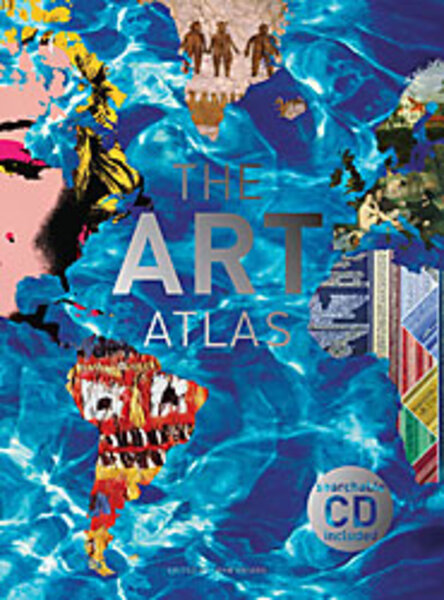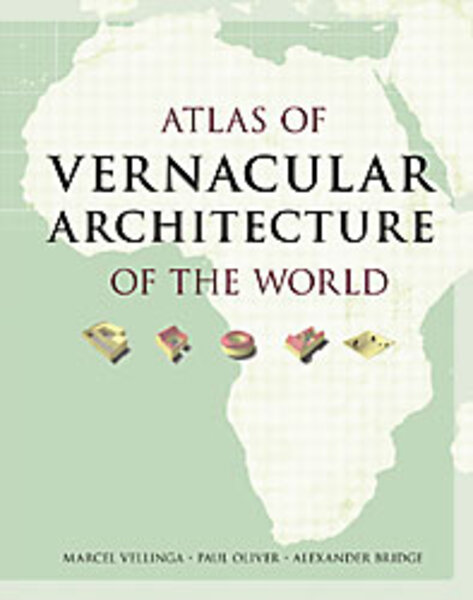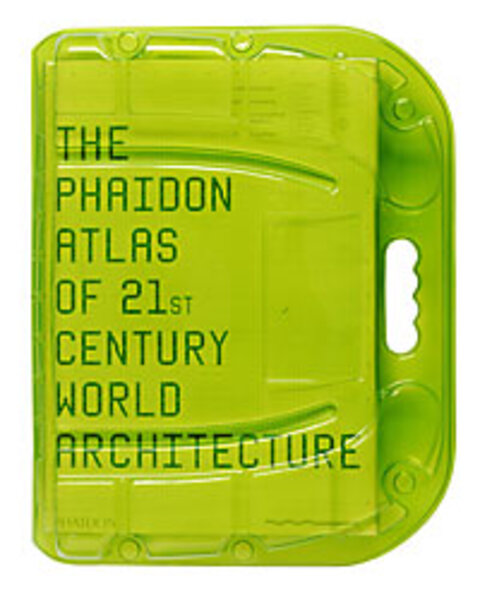Offbeat atlases map architecture, art, and whimsy
Loading...
Ask to see an atlas at a bookstore or library, or type "atlas" into an Internet search engine, and you might expect a map collection highlighting geographic regions – and yet an atlas can assume myriad identities.
An atlas can illustrate global historical and political trends, display migratory bird flights or economic trade patterns. It can assume the form of satirizing atlases. The Onion's "Our Dumb World: Atlas of the Planet Earth" pokes fun at the rigid seriousness of most atlases by claiming, "Now With 30% More Asia!"
Four recent publications, just in time for the holiday season, contribute to this ever-expanding reconsideration of the atlas as an eye-opening educational tool and visual entertainment.
THE PHAIDON ATLAS OF 21ST CENTURY WORLD ARCHITECTURE (Phaidon, $195)
Ancient Greek mythology associated the character Atlas with the strength to hold up the planet, and you might need Atlas-like strength to hold "The Phaidon Atlas of 21st Century World Architecture," a weighty and spectacularly produced atlas containing photographs and drawings of over a thousand exemplary examples of international buildings by more than 600 architects. The selection was made by a team that included London School of Economics faculty and represents a generous spread of unknowns as well as starchitects such as Frank Gehry, Zaha Hadid, and Rem Koolhaas. The large photographs of interiors and exteriors are detailed and atmospheric, and concise explanations are models of erudition and clarity. For any architecture lover, this atlas offers a wealth of buildings reflecting new technologies, new and recycled materials, and novel shapes (the famous Beijing Olympic "Bird's Nest" stadium, a concrete loop-the-loop of a spa by Spain's Justo García Rubio, an amoeba-shaped German university by the Swiss team of Herzog & de Meuron). Here is proof that globalization doesn't ruthlessly standardize design as much as promote local variations on outside-the-box thinking.
ATLAS OF VERNACULAR ARCHITECTURE OF THE WORLD (Routledge, $90)
An offbeat variation on the theme of an architectural atlas is the "Atlas of Vernacular Architecture of the World" by Marcel Vellinga, Paul Oliver, and Alexander Bridge. In contrast to the architects in the Phaidon atlas, these architects are anonymous. "Vernacular architects" are "folk" architects. They are formally untrained, but often fully capable of building functional, low-cost, and sometimes sublime dwellings, and they create more than 90 percent of the world's buildings. Tracing the materials and techniques these folk builders have used over time (such as using sun-dried bricks for walls or layering thatch for roofs) offers heady inspiration for builders currently interested in using local materials and promoting green lifestyles. This is an invaluable guide to the global scatter of folk architectural traditions that shape today's most bracing sustainable designs.
THE ART ATLAS (Abbeville Press, $55)
As architecture reveals, artistic ideas move easily across national boundaries and assume new guises through fruitful border crossings. "The Art Atlas" is the first book that, through world maps, explores how inspiring new art forms have traveled, from the cave drawings of ancient Europe and Egypt to contemporary digital art. Particularly helpful are maps linking material resources of particular regions and styles of gardening and farming, to the making of pigments and textile patterns. For example, a map of 19th-century trade routes across Central Asia discloses how ornate carpet patterns, shown in a moving photograph by the Russian photographer Sergei Prokudin-Gorskii, reflect a blend of Near-Eastern Islamic motifs with European designs. While photographs of artworks are limited in order to make room for copious maps, the maps can inspire exciting searches for these artworks spawned by global communication. Unlike most large art encyclopedias, this atlas, tracing art processes and products in motion across centuries, contributes to outside-the-box thinking and shows how the arts cross-fertilize happily across contentious national boundaries. A CD with PDF files of the entire book is included, offering a convenient alternative to handling this oversized coffee-table volume, and the bargain price makes this an attractive gift for any art lover with a traveler's desire to forge artistic linkages among unlikely destinations.
THE MOST FANTASTIC ATLAS OF THE WHOLE WIDE WORLD (DK Publishing, $19.99)
Finally, kids deserve their own uncommon atlas to engage their curiosity, and a masterly example of a graphically whimsical atlas is the modestly titled "The Most Fantastic Atlas of the Whole Wide World" by British artists known as "The Brainwaves" (aka Lisa Swerling and Ralph Lazar). Cartoon characters engage in outrageous punning and slapstick dialogue for 10-year-olds (of all ages) as they prance across colorful maps highlighting geology, weather, vegetation, and even some surprising cultural facts, promoting the outside-the-box notion that an atlas is an inviting playground of humorously animated ideas.








